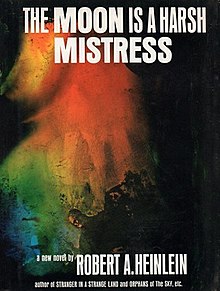So, I was disappointed with the lack of strong female characters in The Moon is a Harsh Mistress, so let's take a look at some moon goddesses this week. I like the Greek ones the best, because those ladies are badass.
Artemis, name of unknown origin, is the Greek goddess of the hunt, childbirth, wild animals, virginity, and the moon, of course. The Roman equivalent is Diana. Her name comes from the PIE-root *dyeu, "to shine." Artemis is often depicted with the bow and arrow in hand, and the cypress and the deer were sacred to her. She was the daughter of Zeus and Leto and twin sister to Apollo. She could out-hunt any man and joined the fight in the Trojan war. That's pretty badass, I think.
Selene, the daughter of the Titans Hyperion and Theia, was the personification of the moon. She drove her moon chariot across the sky. Her name is probably connected from the Greek selas, "light, brightness, bright flame, flash of the eye."
Phoebe was one of the original Titans, daughter of Uranus and Gaia. Her name is from the Greek phoibos, "bright, pure."As well as being associated with the moon, she was probably the goddess of prophesy and oracular intellect.
Hecate, associated with witchcraft, poisonous plants, the crossroads, entrance-ways, ghosts and necromancy, gets her name from the Greek hekatos, "far-shooting." She was seen as an aspect of Artemis, so that probably explains the name. She is often depicted as a triplicate goddess holding a torch, key, serpent, and dagger. Sometimes she has three heads, a horse, dog, and serpent. And she fought the Titans. In the tale of Jason and the Argonauts, Medea was a priestess of Hecate, but you can't hold that against the goddess. Oh, and did you know one name for aconite is hecateis?
There are many others. For a longer list, check out the Wikipedia article here.
Sources:
































